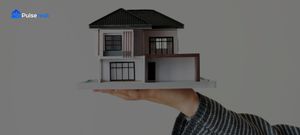Wildfire Vulnerability and Property Values: Analyzing Risk Premiums and Discounts in Real Estate
The increasing frequency and intensity of wildfires across the United States have raised concerns about their impact on property values. This analysis explores the relationship between wildfire risk scores and real estate market dynamics in several cities, examining whether homes in high-risk areas experience price discounts or if other factors mitigate these risks.
Understanding Risk Scores and Hazard Data
To assess the potential impact of wildfire risk, we examined data from several cities, focusing on their overall risk index scores and specific hazard ratings. The risk index score provides a comprehensive measure of a city's vulnerability to various natural disasters, while individual hazard ratings highlight the specific threats posed by events like wildfires, floods, and earthquakes.
For example, consider Dallas, WA, which has a risk index score of 93. This high score reflects the city's overall vulnerability to natural hazards. Within this score, the wildfire hazard rating is 67, indicating a significant risk of wildfires in the area. In contrast, Atlanta, NC, has a risk index score of 34, much lower than Dallas. Atlanta's wildfire hazard rating is 35, also lower than Dallas.
Comparing Cities: Risk Scores and Hazard Ratings
Let's compare several cities based on their risk index scores and wildfire hazard ratings:
- Dallas, WA: Risk Index Score of 93, Wildfire Hazard Rating of 67
- Denver, WA: Risk Index Score of 83, Wildfire Hazard Rating of 88
- Austin, OR: Risk Index Score of 69, Wildfire Hazard Rating of 90
- Tampa, AZ: Risk Index Score of 66, Wildfire Hazard Rating of 95
- Atlanta, NC: Risk Index Score of 34, Wildfire Hazard Rating of 35
As the data shows, Tampa, AZ, has a wildfire hazard rating of 95, the highest among the cities listed. This suggests that properties in Tampa may be particularly vulnerable to wildfires. Denver, WA, also faces a significant wildfire risk, with a hazard rating of 88. Austin, OR, has a wildfire hazard rating of 90.
Analyzing Potential Price Discounts or Premiums
The question remains: do these high wildfire risk scores translate into price discounts for homes in these areas? The relationship between risk and property value is complex and influenced by various factors, including insurance costs, mitigation efforts, and buyer perception.
While specific median price data is not available for these cities in relation to wildfire risk, we can infer potential trends based on the risk scores. For instance, if buyers are highly risk-averse, we might expect to see lower property values in areas with high wildfire hazard ratings, such as Tampa, AZ, with its rating of 95. However, if the market is driven by other factors, such as job growth or desirable amenities, these risks may be offset.
Exploring Additional Data Points
To further understand the dynamics of these markets, it's helpful to consider additional data points, such as population size and other hazard ratings. For example, Austin, OR, has a population of 672624 and an earthquake hazard rating of 93, indicating a high risk of seismic activity. This combination of wildfire and earthquake risk may influence buyer behavior and property values in the area.
Similarly, Charlotte, AZ, has a relatively low risk index score of 3, but its hurricane hazard rating is 90. This suggests that while the overall risk is low, the city is particularly vulnerable to hurricanes. The population of Charlotte is 687887.
Data Table: Risk Scores and Hazard Ratings
| City |
State |
Risk Index Score |
Wildfire Hazard |
Flood Hazard |
Hurricane Hazard |
Population |
| Austin |
OR |
69 |
90 |
56 |
89 |
672624 |
| Charlotte |
AZ |
3 |
7 |
37 |
90 |
687887 |
| Tampa |
AZ |
66 |
95 |
81 |
12 |
660132 |
| Denver |
WA |
83 |
88 |
95 |
74 |
246437 |
| Dallas |
WA |
93 |
67 |
15 |
88 |
666372 |
| Atlanta |
NC |
34 |
35 |
76 |
37 |
819109 |
Additional Exploratory Data
Further data exploration reveals additional insights into other cities and their hazard profiles. For example, Orlando, WA, has a risk index score of 12, significantly lower than Dallas, WA, which has a score of 93. Orlando's wildfire hazard rating is 36. Phoenix, TN, has a risk index score of 41 and a wildfire hazard rating of 43. Portland, OR, has a risk index score of 14 and a wildfire hazard rating of 8. Portland, CO, has a risk index score of 20 and a wildfire hazard rating of 9.
Conclusion
While the absence of specific median price data linked to wildfire risk prevents a definitive conclusion about price discounts or premiums, the analysis of risk scores and hazard ratings provides valuable insights into the potential impact of wildfires on real estate markets. Cities with high wildfire hazard ratings, such as Tampa, AZ, and Denver, WA, may face downward pressure on property values if buyers are highly risk-averse. However, other factors, such as economic growth and desirable amenities, can mitigate these risks. Further research is needed to quantify the precise relationship between wildfire risk and property values in these and other affected areas.



